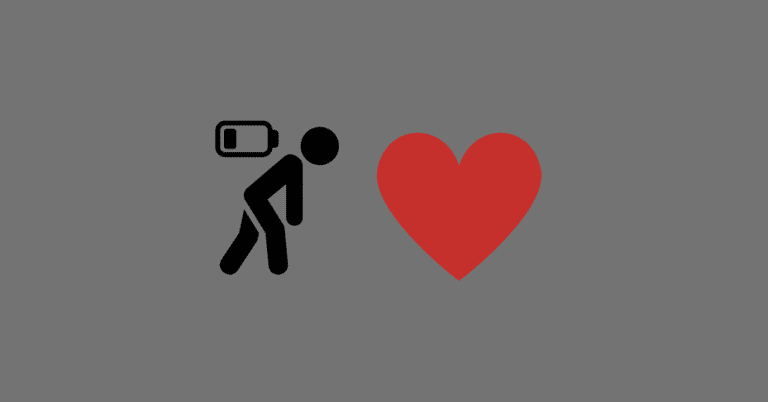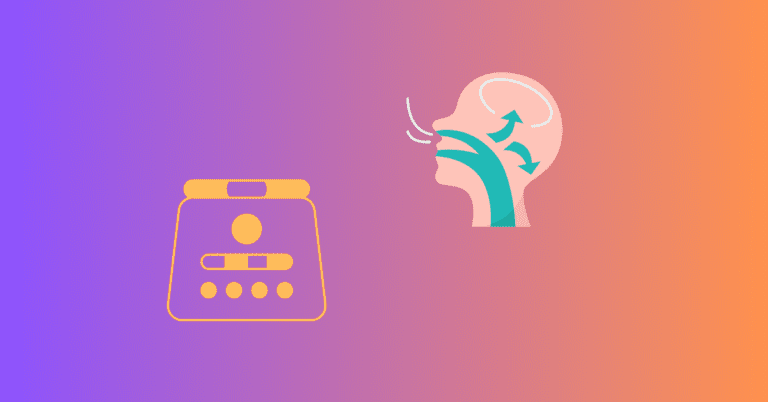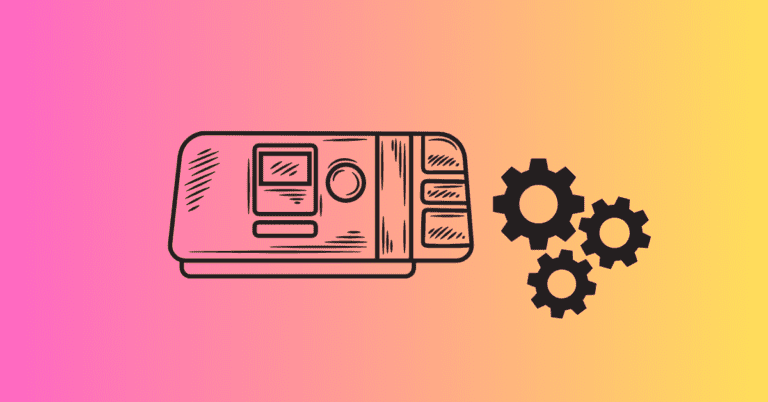What Does CPAP Stand For?
Jeremy Smith is a long-term CPAP user and sleep apnea advocate. After being diagnosed with severe obstructive sleep apnea, he created ByJeremySmith.com to help others navigate CPAP therapy through personal stories, gear reviews, and practical advice.
When I was first diagnosed with severe sleep apnea, I had no idea what CPAP even stood for.
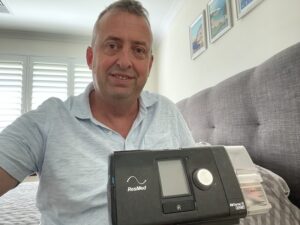
All I knew was I was waking up exhausted, with pounding morning headaches and the kind of brain fog that made everyday tasks feel impossible.
Once I started CPAP therapy, everything changed. But it took a while to understand the jargon—and if you’re feeling confused, I’ve been there too.
Let’s break it all down simply so you can feel confident about your sleep apnea journey.
What Does CPAP Stand For?
CPAP stands for Continuous Positive Airway Pressure. It’s the most commonly prescribed therapy for obstructive sleep apnea (OSA).
The basic idea? A CPAP machine keeps your airway open at night by delivering a constant, steady stream of air through a mask. That airflow prevents the soft tissues in your throat from collapsing—which is what causes those scary pauses in breathing during sleep.
It sounds a bit scary at first, doesn’t it?
How can you possibly sleep with a jet of air coming in your mouth or nose?
But you will get used to it and it’s much better than the consequences of not using CPAP, take my word for it.
I see mine as more of a comforter now than an alien stuck to my face.
How Does CPAP Work?
Your CPAP setup includes three main components:
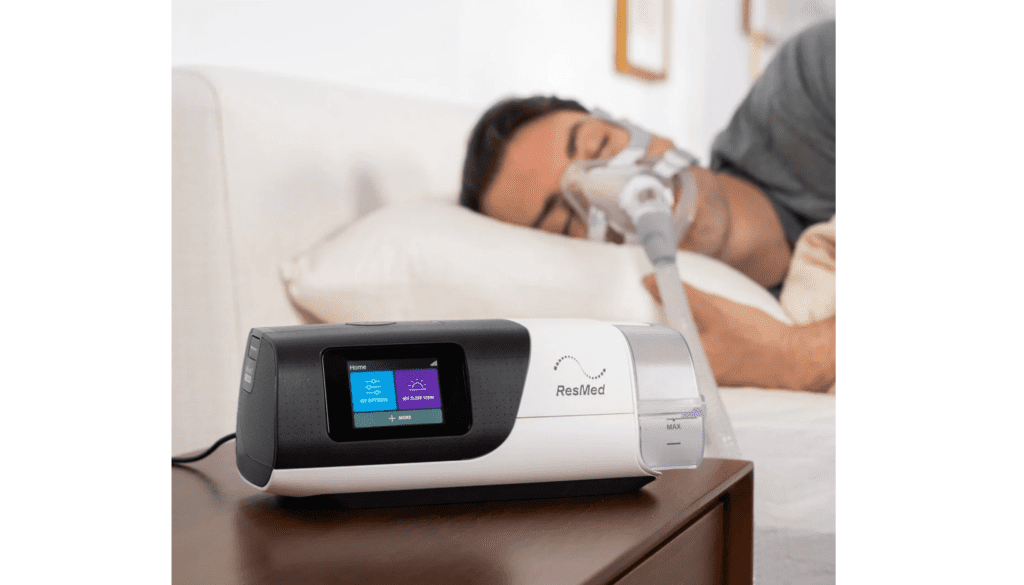
- The machine: Generates airflow.
- The hose: Delivers air from the machine to your mask.
- The mask: Seals around your nose or mouth to direct air into your airway.
The machine pictured above is the ResMed CPAP 11 autoset and is the one I recommend.
It works a bit like a gentle air splint. That steady pressure acts as a cushion to hold your airway open. You breathe naturally, but with support that prevents interruptions.
Most machines let you adjust comfort settings like ramp time (a delay that lets pressure build gradually) and humidity. If you’ve ever felt “strangled” using CPAP early on, chances are those settings just needed tweaking. Trust me, I had to get my sleep specialist to fiddle with it a couple of times before I found my sweet spot.
Who’s a Match for CPAP Therapy?
CPAP is the gold standard for:
- People with moderate to severe obstructive sleep apnea
- Those with loud snoring and daytime sleepiness
- People looking for a non-surgical treatment option
If you’ve had a sleep study and your apnea-hypopnea index (AHI) is 15 or higher, chances are CPAP will be your first recommendation.
I started at an AHI of 58—waking up over 58 times an hour! With consistent CPAP use, I’ve brought that number down to around 5. And that’s the difference between dragging through the day and actually living your life.
Who CPAP Therapy May Not Work For
CPAP isn’t a one-size-fits-all solution. It might not be ideal if:
- You have central sleep apnea (a different condition where the brain fails to signal your muscles to breathe)
- You have complex sleep apnea (a mix of OSA and central apnea)
- You just can’t tolerate a fixed pressure (some folks feel claustrophobic or breathless)
If that’s you, don’t panic. There are excellent alternatives like BiPAP and APAP that may work better. Let’s talk about those.
What Does BiPAP Stand For?
BiPAP stands for Bilevel Positive Airway Pressure.
Unlike CPAP, which delivers the same pressure for both inhaling and exhaling, BiPAP has two pressure levels:
- IPAP: Inhalation Positive Airway Pressure
- EPAP: Exhalation Positive Airway Pressure
How Does BiPAP Work?
BiPAP machines are more flexible. They ease the pressure when you exhale, which can feel more natural—especially for people with:
- COPD
- Neuromuscular disorders
- Obesity hypoventilation syndrome
- High-pressure CPAP intolerance
When I tested a BiPAP machine out of curiosity, I was shocked at how different it felt. Breathing felt more effortless. It’s a game-changer for folks who can’t handle CPAP’s single-pressure setup.
What Does APAP Stand For?
APAP stands for Automatic Positive Airway Pressure. You might also hear it called “Auto-CPAP.”
Here’s what makes APAP smart: It adjusts the pressure automatically based on your breathing patterns in real time. If your airway starts to collapse, it increases pressure. When you’re breathing fine, it dials it back.
How Does APAP Work?
Think of it as cruise control for your airway. APAP machines use built-in sensors and algorithms to detect:
- Snoring
- Apnea events
- Airflow resistance
The machine makes subtle changes through the night, which means it’s super comfortable and ideal for:
- New users
- Light sleepers
- People whose apnea varies with sleep position or stage
When I switched to APAP for travel, I loved how it adapted to different environments—altitude, humidity, everything. It’s become my go-to for flexibility.
Other PAP Acronyms You Might Hear
If you’ve been Googling your way through the world of sleep apnea, you’ve probably seen acronyms like:
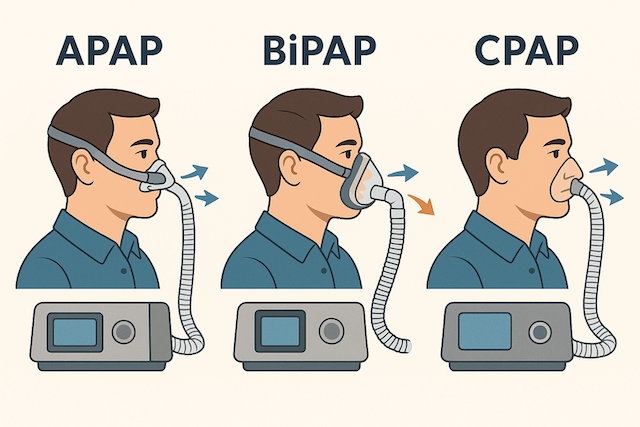
- PAP: Positive Airway Pressure (the umbrella term)
- CPAP: Continuous pressure
- BiPAP: Two-level pressure
- APAP: Automatically adjusted pressure
- ASV: Adaptive Servo-Ventilation (for complex sleep apnea—used mostly under medical supervision)
Each has its place. Choosing the right one often depends on a proper sleep study and expert input from your sleep doctor.
What Are these PAP Machines?
PAP machines are devices that deliver pressurized air to treat sleep apnea. They all include:
- An air generator
- A humidifier (optional but highly recommended)
- A hose
- A mask interface
Modern PAP machines are quiet, compact, and come with data-tracking features so your doctor (or you) can monitor your progress. Some even connect to apps that show your AHI, mask seal quality, and nightly usage.
I use the ResMed AirSense 10, and it’s been a game-changer. Chunky design, easy-to-use screen, and fantastic humidification.
Conclusion
If you’re just starting out with sleep apnea treatment, CPAP might sound intimidating—but understanding what it stands for and how it works makes a huge difference.
Remember:
- CPAP = steady pressure
- BiPAP = flexible two-level pressure
- APAP = smart, automatic adjustments
If one doesn’t work, don’t give up. Some alternatives can get you the sleep you deserve.
👉 Need help choosing a machine? Check out my CPAP Machine Buyer’s Guide
👉 Curious about full facemasks? Visit the Top-Rated Full Face CPAP Masks
If you have any questions about any of these or you have worries or concerns, please let me know in the comments below 🙂
Disclaimer: The content on this blog is for informational and educational purposes only and is not a substitute for professional medical advice. Always speak with your doctor or sleep specialist before starting, stopping, or changing any treatment or therapy related to sleep apnea or CPAP use.


